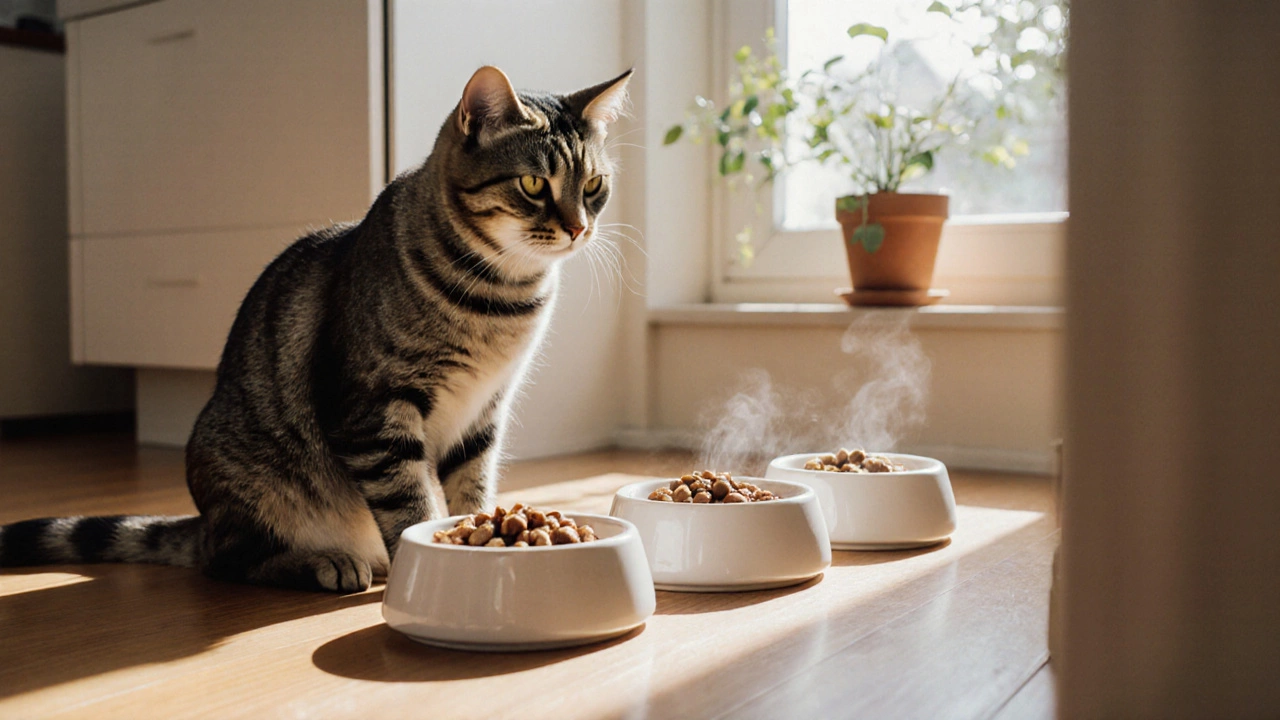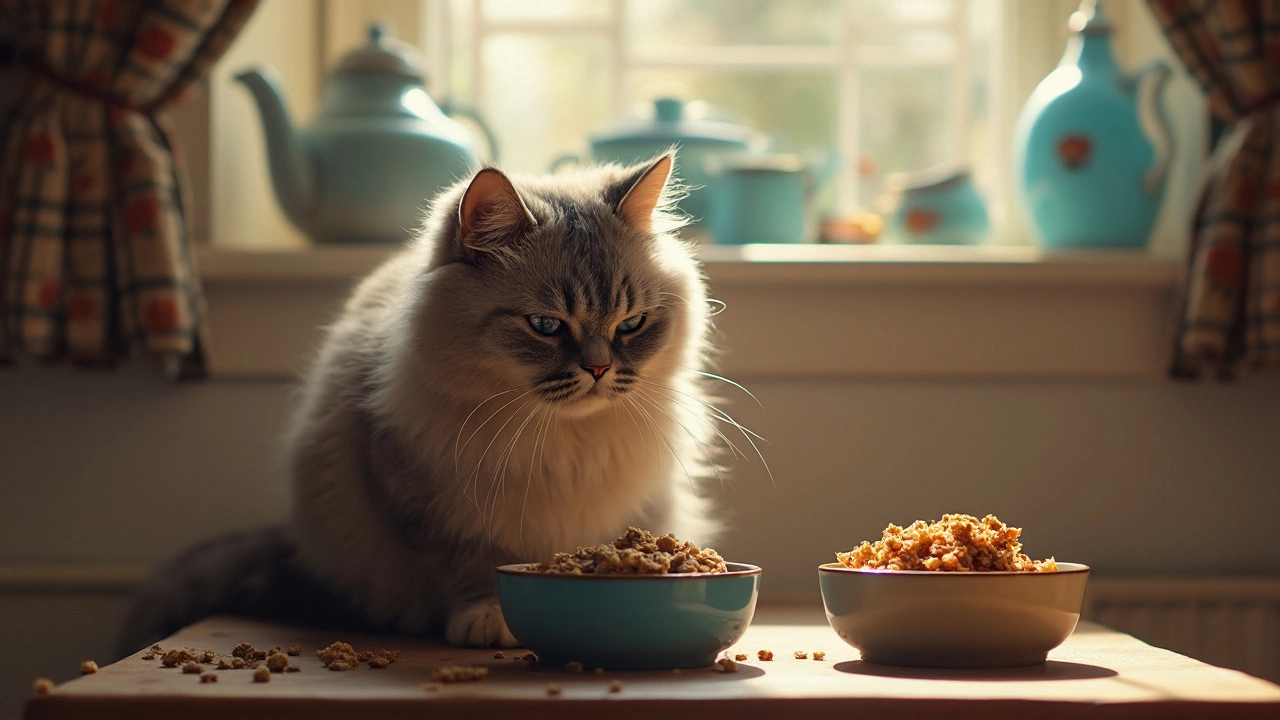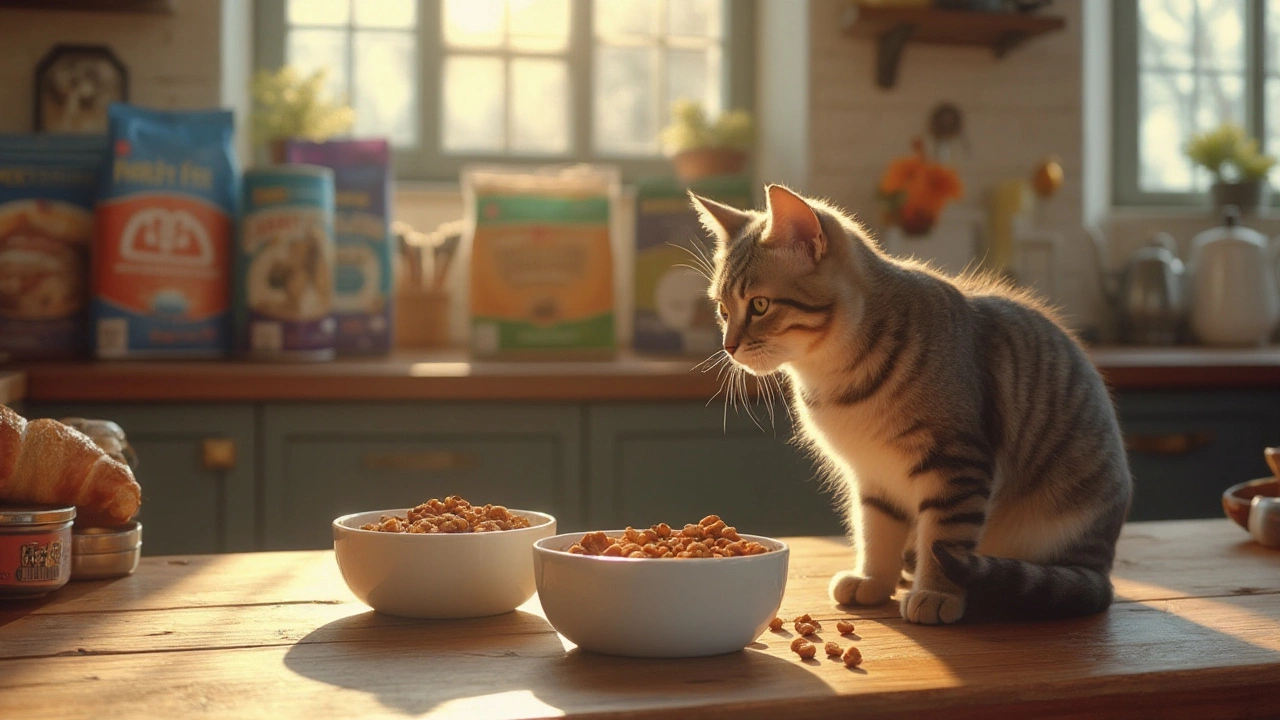Feeding Cats Made Simple: What You Need to Know
If you’ve ever stared at a bag of kibble wondering if it’s really right for your cat, you’re not alone. Cats have tiny stomachs, unique taste buds, and a need for specific nutrients that can feel tricky to pin down. The good news? You don’t need a degree in veterinary science to feed them well. A few basic principles, a glance at ingredient lists, and a sensible feeding schedule will keep your kitty thriving.
Choosing the Right Cat Food
First up, wet vs dry. Wet food packs more moisture, which helps with hydration—especially useful if your cat isn’t a big water drinker. It also tends to be more aromatic, making picky eaters happier. Dry kibble, on the other hand, is convenient, cheaper per serving, and can help keep teeth clean by reducing plaque buildup.
When you compare the two, look for real meat as the first ingredient, low fillers like corn or wheat, and a balanced mix of taurine, vitamin A, and omega‑3 fatty acids. If a product boasts “grain‑free” but lists mystery meats and a slew of additives, it’s probably not the winner.
Our own tag page includes a deep dive titled "Wet vs Dry Cat Food: Which Is Better for Your Cat’s Health?" – give it a read if you want a side‑by‑side comparison with real pros and cons.
Feeding Schedule and Portion Sizes
Most adult cats do fine on two meals a day, spaced about 12 hours apart. Kittens need more frequent feedings—about three to four times daily—because they’re growing fast. Use the feeding guide on the bag as a starting point, then adjust based on your cat’s activity level and body condition.
A quick way to check if you’re feeding the right amount is the “feel the ribs” test. You should be able to feel, not see, each rib with a light layer of fat covering. If the ribs are sticking out, trim portions; if you can’t feel them, add a little more.
Remember to provide fresh water at all times, especially if you feed mostly dry kibble. Some cat owners set up a water fountain; the moving water often entices cats to drink more.
Lastly, avoid sudden diet changes. If you’re switching brands or moving from wet to dry, mix the new food in gradually over a week. This prevents digestive upsets and makes the transition smoother for both you and your cat.
Feeding cats isn’t rocket science—just a mix of good food choices, steady routine, and a bit of observation. Keep an eye on your cat’s weight, coat condition, and bathroom habits, and you’ll know if you’re on the right track. Need more ideas? Browse our other posts on this tag for specific product reviews and vet‑approved feeding tips.

How Many Times Should You Feed a Cat? Expert Guide to Feeding Frequency
Learn the ideal number of meals per day for kittens, adults, and senior cats, how food type affects timing, and practical steps to set a healthy feeding schedule.
View more
Pate vs Shreds Cat Food: Which Texture Wins for Your Feline?
Wondering if pate or shreds is better for your cat? Explore texture, nutrition, and tips for picky eaters to help your cat thrive.
View more
Can Wet and Dry Cat Food Be Safely Mixed Together?
Combining wet and dry cat food is a common practice among pet owners, but does it benefit your cat's diet? This article explores the reasons for mixing, potential benefits, and important considerations when creating a balanced meal for your feline friend. Discover how to ensure nutritional adequacy and why your cat might prefer a mixed feeding approach.
View more